What to Know if You Spend Christmas in Reykjavík
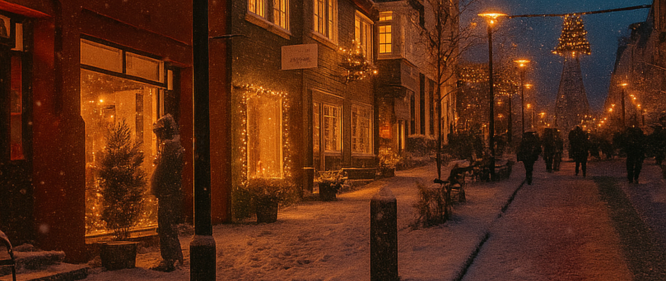
There’s nowhere quite like Christmas in Reykjavik. The nights are long and dark. But the city bursts alive with dazzling lights, quirky folklore, and the chance to see the northern lights. It’s a holiday season that feels both magical and otherworldly.
Ready to experience it yourself? Here are 17 things to know before visiting Reykjavík during the Christmas season.
1. The Christmas Season Lasts for 26 Days
In Iceland, Christmas stretches over 26 days, from 11 December to 6 January. The season begins when the first Yule Lad arrives and builds toward the big dates:
● 23 December – Þorláksmessa (St. Þorlákur’s Day): Builds up the Christmas celebrations with last-minute shopping and preparations.
● 24 December – Aðfangadagur (Christmas Eve): The highlight of the holiday, when families gather for festive meals and exchange gifts.
● 25 December – Jóladagur (Christmas Day): A quieter family day, with church services and traditional foods.
● 26 December – Annar í jólum (Boxing Day): A public holiday, often spent visiting relatives.
● 31 December 3 – Gamlárskvöld (New Year’s Eve): Reykjavík erupts with bonfires, fireworks, and all-night celebrations.
● 1 January – Nýársdagur (New Year’s Day): A public holiday, often spent resting with family.
● 6 January – Þrettándinn (the Thirteenth): The official end of the season, marked with bonfires, folklore parades, and fireworks to close the season.

2. Christmas “Officially” Begins on 24 December
For Icelanders, Christmas truly begins on Aðfangadagur (Christmas Eve), not on 25 December. At exactly 6:00 pm, church bells ring across Reykjavík and the national broadcaster plays the sound of Christmas bells. It echoes a tradition from the old Norse calendar where a new day began at sunset.
3. Thirteen Mischievous Yule Lads Roam the City
Iceland doesn’t have Santa Claus. Instead, it has the 13 Yule Lads (jólasveinar), mischievous figures named after their naughty habits, from Door-Slammer to Spoon-Licker.
The first Lad arrives 13 nights before Christmas Eve, leaving gifts in the shoes children place on their windowsills. (Or a potato if they’ve misbehaved). The last appears on 24 December, and by 6 January, they’ve all returned to the mountains.
Visitors can join the fun through Yule Lad hunts around the city, with projections, scavenger games, and meet-and-greets.
4. A Huge Christmas Cat Watches Over Lækjartorg
One of Iceland’s most famous Christmas legends is the Jólakötturinn, or Christmas Cat. It’s said to eat anyone who doesn’t receive new clothing before Christmas. Today, the story lives on in downtown Reykjavík, where a giant illuminated sculpture of the Cat towers over Lækjartorg Square. This marks the start of the city’s festive atmosphere.
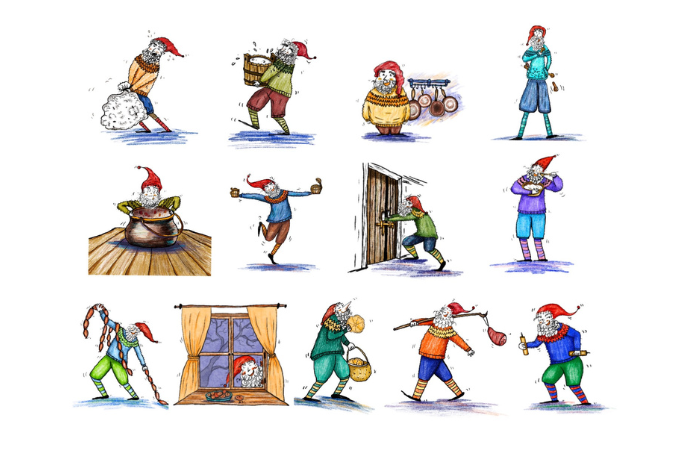
5. Christmas Lights Brighten Up the City
December is the darkest month of the year, with only 4-5 hours of daylight. But Reykjavík glows under a dazzling blanket of Christmas lights. Laugavegur Street becomes a glowing walkway of arches and decorations. While neighborhoods compete with colorful displays that appear as early as October.
Reminder: Don’t miss the Oslo Christmas Tree lighting on Austurvöllur Square on the first Sunday of Advent!

6. There’s a High Chance of a White Christmas
Snowfall in December can pile up to around 40 cm (15 in), turning the city into a winter postcard. The snow drapes over twinkling Christmas lights, softens the rooftops, and makes Laugavegur and Austurvöllur Square feel even more enchanting. Pack insulated boots, thermal layers, and gloves to enjoy it fully.

7. It’s Peak Season for Northern Lights
Long nights and clear skies create ideal conditions for aurora borealis sightings in Reykjavík. For travelers, it’s worth noting that Center Hotels offer a northern lights wake-up call upon request. That way, you won’t miss a show even if it appears in the middle of the night.
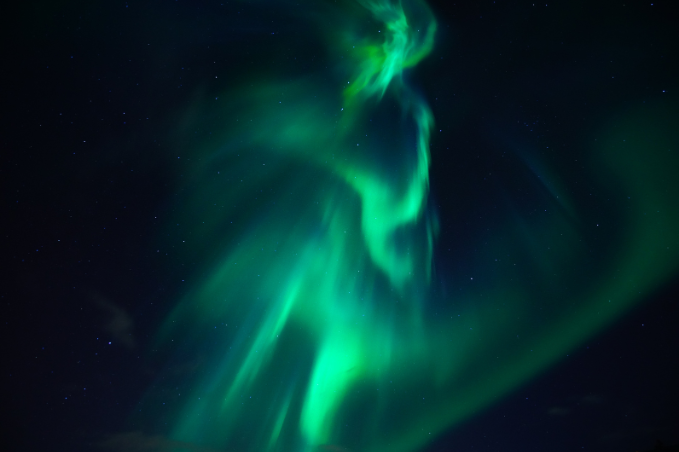
8. Christmas Markets Pop Up Across the City
Reykjavík may be small, but its Christmas markets bring a big festive spirit:
● Jólakvosin at Ingólfstorg: Beside the skating rink, with sweets, mulled wine, and crafts.
● Hjartartorg Square: Weekends and the days before Christmas Eve, buzzing with gifts, food, and entertainment.
● Heiðmörk Woods: Advent weekends in a rustic forest setting, with handmade crafts and outdoor cafés.
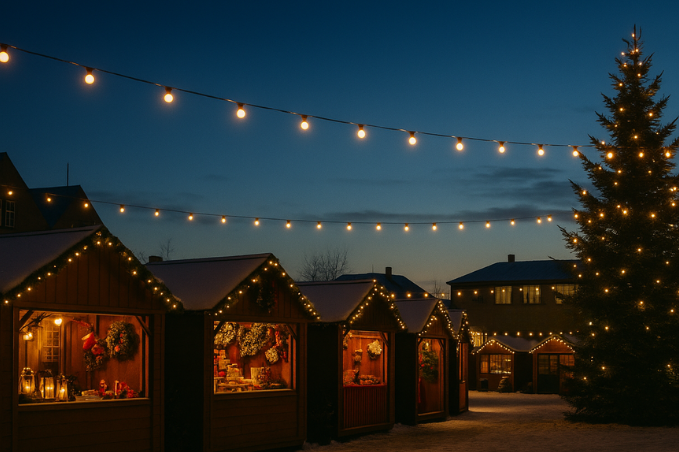
9. Festive Spots Turn Reykjavík Into a Winter Wonderland
Reykjavík celebrates Advent with holiday experiences that feel like a storybook come to life. And here are two places that are worth visiting:
● Árbær Open Air Museum: Turf houses transform into a Christmas Village-like scene with Yule Lads, and leaf-bread making.
● Christmas Valley in Laugardalur: A family-friendly park with festive lights, outdoor grills, and a carousel.

10. Ice Skating Rinks Stay Open Through December
Few things feel more festive than ice skating in downtown Reykjavík. The main seasonal rink opens on Ingólfstorg Square in late November and runs most days in December (closed 24–25 December). For a more natural option, locals sometimes skate on Tjörnin pond when the ice is thick enough, though conditions vary.

11. Christmas Concerts Are a Seasonal Highlight
December in Reykjavík is filled with Christmas concerts, from choir recitals in local churches to performances at Harpa Concert Hall. Choirs, orchestras, jazz ensembles, and pop artists all take part, making live music a central part of the holiday season. Tickets sell out quickly, so plan ahead if you’d like to experience Reykjavík’s holiday spirit through song.
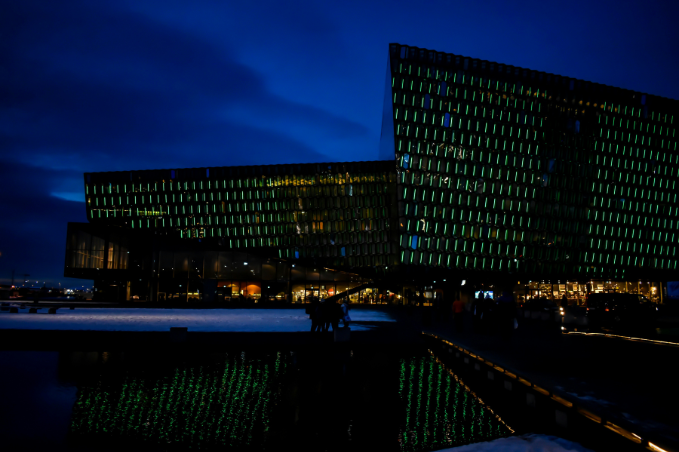
12. Traditional Christmas Buffets Are Everywhere
One of the best ways to taste Icelandic holiday traditions is through the jólahlaðborð, or Christmas buffet. Throughout December, hotels and restaurants across Reykjavík serve sprawling spreads of traditional Icelandic food. This includes hangikjöt (smoked lamb), hamborgarhryggur (glazed ham), fermented skate, gravlax (cured salmon), and warm flatkökur (flatbread) with butter. Sweet treats like laufabrauð (leaf bread), sarah cookies, and steaming hot chocolate round out the feast.
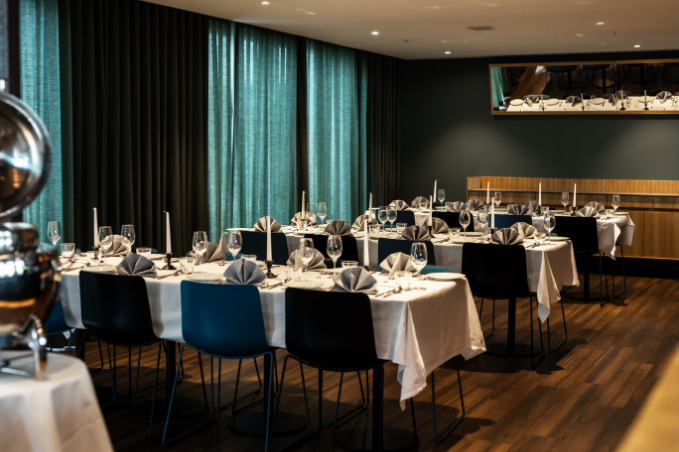
13. The City Gets Flooded With Christmas Books
In Iceland, the holidays are marked by a “Christmas Book Flood” (Jólabókaflóðið). This is when hundreds of new titles are published in time for the holiday gift-giving season. Bookstores in Reykjavík buzz with shoppers picking out novels, poetry, and children’s stories for family and friends. The reason? Books are among the most common Christmas gifts here.
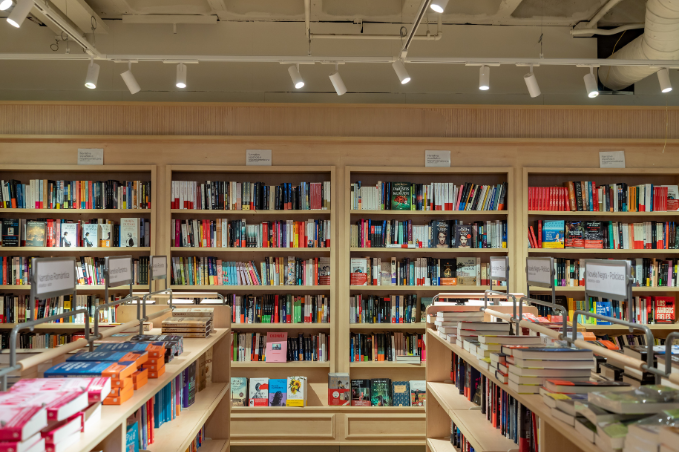
14. Swimming Pools and Hot Springs Are in High Demand
Even in the middle of winter, Icelanders flock to the water. Reykjavík has 18 geothermal swimming pools, including the historic Sundhöllin, perfect for a quick dip between Christmas activities. During the holidays, these pools and spas are especially busy as both locals and visitors soak in the warm water. Hence, booking ahead is essential.
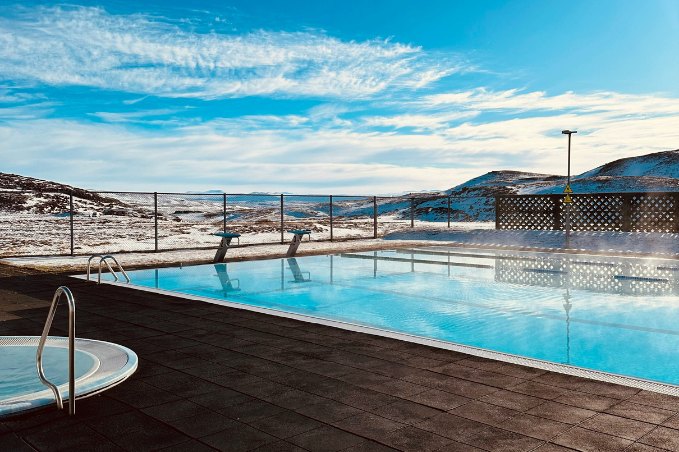
15. The Weather Is Unpredictable
Iceland’s weather in December is famously unpredictable. One day may bring clear skies and fresh snow, the next could see rain, wind, or sudden storms. In Reykjavík, temperatures usually range from -1°C to 4°C (30-39°F), but the wind often makes it feel much colder.
For travelers, this means packing smart: waterproof outer layers, insulated boots, thermal clothing, and plenty of warm accessories. Tours and outdoor activities may be delayed or canceled, so flexibility is key.

16. Christmas in Reykjavík Can Get Expensive
The holiday season is one of the priciest times to visit Reykjavík. Hotels, flights, and winter day tours from Reykjavík often charge peak rates in December. Also, festive extras, such as buffets and concerts, can quickly add up to the total cost. That said, booking early and looking for seasonal deals can make a big difference.
Center Hotels, with prime downtown locations, offers a discount for direct bookings. For Christmas markets and skating, stay at Center Hotels Plaza or Þingholt by Center Hotels, while Center Hotels Laugavegur and Miðgarður by Center Hotels are ideal for shopping.
17. Most Establishments Are Closed on Public Holidays
If you’re in Reykjavík over Christmas, be prepared for the city to slow down. Shops, museums, and many restaurants close early or remain closed entirely on 24–26 December, as well as on 1 January. Public transport also runs on a limited schedule during these days. Some hotels and larger restaurants stay open, but reservations are essential. Check out Jörgensen Kitchen and Bar and Grandi restaurant and bar, both are open during the holidays and offer delicious holiday meal options.
Experience a Magical Reykjavik During the Christmas Season
Why not spend your Christmas in Reykjavik? Yes, it’s dark, cold, and sometimes unpredictable. But that’s exactly what makes the lights brighter, the food richer, and the traditions more meaningful.
Wander the Christmas markets, hunt the Yule Lads, soak in a hot spring, catch a concert, or chase the northern lights. There’s no shortage of what you can do! Bring warm layers and a spirit of adventure, and you’ll be rewarded with a holiday unlike any other. If Christmas here is on your bucket list, take the leap; it’s worth it!
FAQs About Spending Christmas in Reykjavik
Is Reykjavik good for Christmas?
Yes! The city is full of lights, markets, and unique Icelandic Christmas traditions, making December a festive time to visit Reykjavik.
Does Reykjavik have Christmas markets?
Yes, several markets pop up in December, including Jólakvosin at Ingólfstorg, Hjartartorg Square, and the Heiðmörk forest market.
What’s the weather like in Reykjavik at Christmas?
Expect temperatures between -1°C and 4°C (30-39°F), with a mix of snow, rain, wind, and occasional storms.
Is Reykjavik open over Christmas?
Most shops and museums close from 24-26 December and on 1 January, although some restaurants and hotels remain open.
What can you do in Reykjavik at Christmas?
You can visit Christmas markets and concerts, go ice skating, soak in hot springs, and explore nearby winter landscapes.
Can you see the Northern Lights in Reykjavik at Christmas?
Yes, December is peak aurora season, and many hotels offer wake-up calls if the lights appear during the night.

